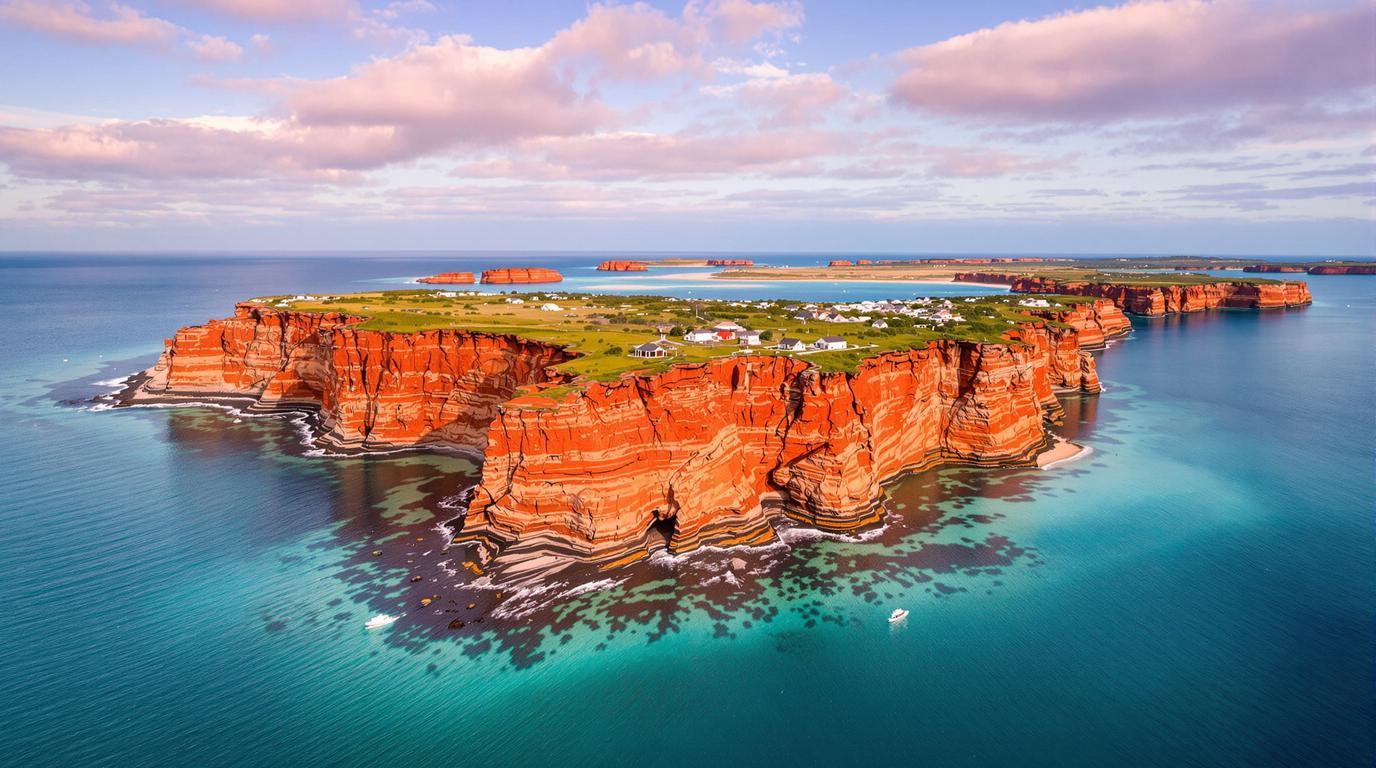The pristine archipelago of Îles de la Madeleine emerges from the Gulf of St. Lawrence like a string of colorful pearls connected by golden ribbons of sand. These remote Quebec islands, centered around Cap-aux-Meules (47.3876° N, 61.8599° W), harbor a world where red sandstone cliffs dramatically meet turquoise waters, and Acadian culture thrives in a landscape that feels more maritime Europe than North America.
A fragile paradise of red cliffs and golden shores
The archipelago’s most striking feature is its geological contrast – vibrant red sandstone cliffs sculpted by relentless Atlantic winds stand guard over 300 kilometers of pristine beaches. Unlike France’s rare black pebble beaches, these shores shimmer with fine golden sand that squeaks underfoot – a phenomenon locals call “singing sands.” Erosion constantly reshapes these fragile formations, with cliffs receding up to one meter annually in some areas.
Where French heritage meets maritime soul
The islands’ 12,000 residents, predominantly French-speaking Acadians, maintain a culture deeply intertwined with the sea. Fishermen still haul in lobster traps using traditional methods passed down through generations. One local captain, Pierre Arsenault, explains: “Our connection to the sea isn’t just about making a living—it’s in our blood, our language, our very identity.”
La Grave: A historic fishing village frozen in time
On Havre-Aubert island sits La Grave, a historic site where weathered wooden buildings once housed cod processing facilities. Now transformed into boutiques, galleries, and eateries, it retains its authentic maritime character without feeling touristy. Unlike Poland’s meticulously rebuilt historic cities, La Grave evolved organically, preserving its genuine seafaring soul.
Culinary treasures from land and sea
The islands’ gastronomy celebrates the surrounding waters. At Fumoir d’Antan, fourth-generation smokers prepare herring using century-old methods in traditional wooden smokehouses. Meanwhile, Fromagerie du Pied-de-Vent produces award-winning cheeses from island-raised cows that graze on grass infused with sea salt. Local brewers at À l’Abri de la Tempête even incorporate seaweed and local berries into their distinctive craft beers.
Entry Island: The archipelago’s untouched gem
The only inhabited island not connected by road, Entry Island remains a world apart. Its English-speaking community lives much as they have for generations, maintaining a distinct dialect and traditions. Similar to Ireland’s culturally preserved islands, Entry Island offers a glimpse into a vanishing way of life.
Summer’s fleeting perfection
The June-to-September window delivers the perfect conditions for exploring these islands. Mild temperatures (60-77°F) combine with calm seas and longer daylight hours. “There’s something magical about our summers,” notes Claire Leblanc, a local guide. “The light has a quality that photographers travel thousands of miles to capture—soft gold at dawn, crystalline clarity at midday, and fiery intensity at sunset.”
Beneath the waves: An underwater wilderness
The waters surrounding the islands teem with marine life. While not a secret shark nursery like some Mediterranean waters, the archipelago hosts diverse ecosystems. Kayakers regularly encounter curious seals, while divers explore shipwrecks preserved in the cold Atlantic waters.
Navigating island time
Getting here requires planning – CTMA ferries from Prince Edward Island or flights from Montreal and Quebec City are your primary options. Once on the islands, renting a car is essential for exploring the 85-mile Route 199 that winds through most of the archipelago. Accommodations range from seaside cottages to the more upscale Château Madelinot, where rooms with panoramic ocean views book months in advance.
A celestial connection
Far from city lights, the islands offer spectacular stargazing opportunities. Though not as astronomically aligned as Peru’s ancient valleys, the night skies above Cap-aux-Meules reveal the Milky Way in breathtaking clarity. Local astronomers occasionally host beach viewings where the stars seem to melt into the horizon.
The Îles de la Madeleine exist in perfect isolation – close enough to reach yet far enough to preserve their distinctive character. Here, where time moves to the rhythm of tides rather than clocks, visitors discover that true luxury isn’t found in exclusive resorts but in moments of authentic connection with an unspoiled natural world and the resilient people who call it home.
